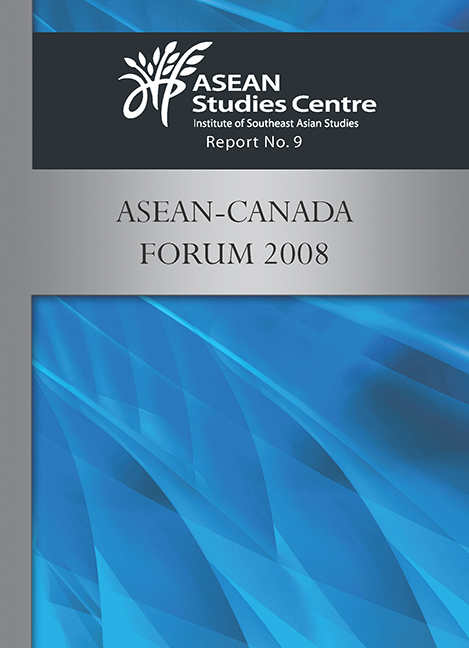Summary of the Forum
from I - Regional Economic Integration: ASEAN and Canadian Perspectives
Published online by Cambridge University Press: 21 October 2015
Summary
Summary of the Forum
On 25–26 November 2008, the Regional Economic Studies Programme of the Institute of Southeast Asian Studies (ISEAS) and the International Development Research Centre (IDRC), Singapore, jointly organized a forum on “Regional Economic Integration: ASEAN and Canadian Perspectives”. The programme and the full list of participants are presented in ANNEX I and ANNEX II.
The forum's broad objective was to promote research partnerships and build stronger economic, political and social linkages between institutions in the Association of Southeast Asian Nations (ASEAN) and Canada. In the process, it sought to shed light on various aspects of the ASEAN Free Trade Area (AFTA) and the North American Free Trade Agreement (NAFTA), to which Canada is a party.
Opened by Ambassador K. Kesavapany, ISEAS Director, Richard Fuchs, Director of IDRC Singapore, and Ambassador David Sevigny, Canadian High Commissioner in Singapore, the forum started with a keynote address by Professor Kishore Mahbubani, Dean of the Lee Kuan Yew School of Public Policy, National University of Singapore, who laid out the nature and emphasized the value of ASEAN-Canada relations.
The forum covered a comparison between the AFTA agreement and the NAFTA, institutional development in ASEAN and NAFTA, governance issues in the two regions, the different approaches to dispute settlement, the question of winners and losers in regional economic integration, and labour mobility and migration. The forum closed with a discussion of future research.
John Whalley, Professor of International Trade at the University of Western Ontario in London, Ontario, explained the broad differences between AFTA and NAFTA. AFTA, he pointed out, involved largely tariff-based integration among national economies initially linked through non-trade arrangements. He cited the fact that ASEAN members traded much more with countries outside the region than with one another. He also noted that, in the case of trade in manufactures, the reduction in trade barriers was seen as benefiting mainly one country. On the other hand, NAFTA was much wider in scope, increasing foreign direct investments into Mexico and intra-regional exports all around.
- Type
- Chapter
- Information
- ASEAN-Canada Forum 2008 , pp. 3 - 10Publisher: ISEAS–Yusof Ishak InstitutePrint publication year: 2010



